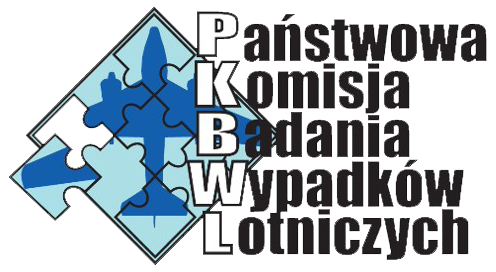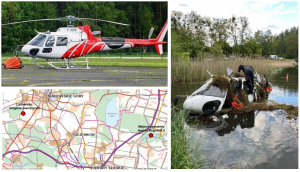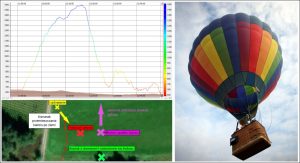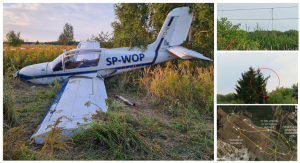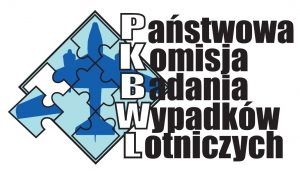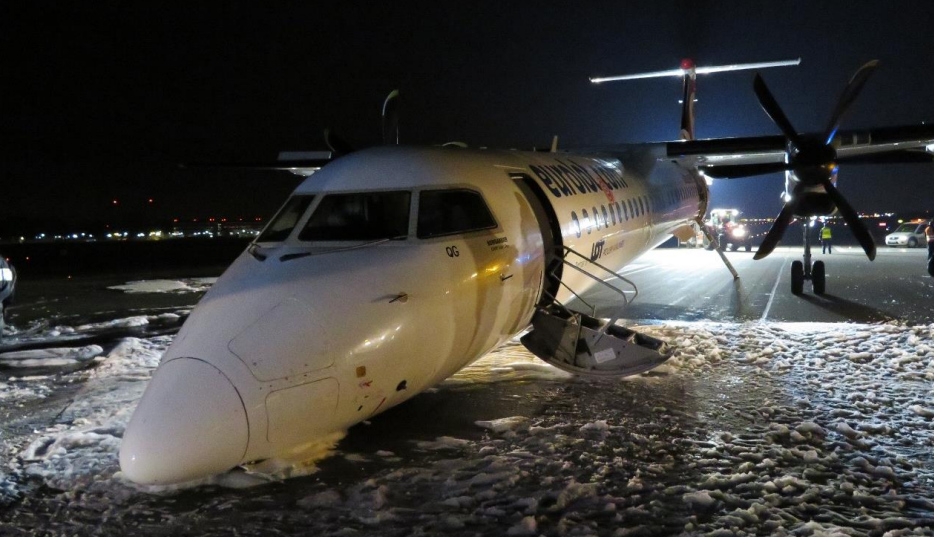
On 10 January 2018 at 18:07 hrs LMT, Bombardier DHC-8-402 aircraft, registration marks SP-EQG, took off for the planned flight EPKK-EPWA (LO 3924). There were 59 passengers on board and 4 crew members. During climb the nose landing gear (NLG) did not retract after moving the landing gear control lever to the UP position. Amber light N DOOR (nose door open), red light NOSE (nose gear not uplocked or downlocked) and red light on the landing gear control lever
(gear in transit) illuminated. The CPT decided to continue the flight to the destination (EPWA). During the landing approach to EPWA, the crew extended the landing gear with the alternate system. The main landing gear (MLG) was extended and locked, but the NLG did not change its position. The crew made an emergency landing on EPWA RWY11 with NLG in the transit position, which was folded during the landing roll. When the plane came to rest on RWY11 (19:19 hrs LMT), the passengers were evacuated. All passengers and crew left the plane uninjured. The plane was damaged to an extent that required repair
The immediate cause of the accident was excessive free play in the retraction/extension system of the nose landing gear (NLG).
Contributing factors:
1) Lack of procedures to measure and monitor the free play in the nose landing gear retraction/extension system during the Time Between Overhaul (TBO) which was 30000 CY or 14 years.
2) The lack odf analysis of the three-point landings which caused overload of the NLG.
3) The lack of dedicated procedures to verify a possible damage resulting from untypical one-time events, such as the tug hitting the drawbar connected to the aircraft.
After completion of the investigation PKBWL has proposed three safety recommendations.
Z-1/67/18
The investigation of the accident and the analysis of previous occurrences involving Bombardier DHC-8-402 airplanes showed that excessive free play in the NLG kinematic system resulted in the inability to retract or extend NLG. The free play arise in the process of normal operation, but excessive loads and corrosion contribute to their development. The TBO for the NLG is 30 000 CY or 14 years and free play is not measured during this period. Based on the above facts, PKBWL recommends that: Bombardier Incorporation in consultation with Transport Canada take actions aimed at development and implementation of a system to monitor the mechanical condition of the NLG kinematic system during the TBO to ensure that excessive free play is detected at an early stage allowing for corrective action.
Z-2/67/18
The investigation of the accident revealed that apart from the hard landings monitored by FDM, other types of landings had occurred, which could cause very serious consequences, but had not been analyzed. Those landings have consisted in activation of the NLG WOW sensors prior to the MLG sensors activation with a negative pitch angle during the touchdown, which indicates landings, which could lead to an excessive load of the NLG. Based on the above facts, PKBWL recommends that: Bombardier Incorporation in consultation with Transport Canada consider the necessity of introducing mandatory monitoring of landings during which WOW sensors have signalled the load of the NLG wheels earlier than on the MLG, specifying the procedure for their detection and necessary checks after their occurrence.
Z-3/67/18
During the investigation it was revealed that a month earlier, while preparing for the push-back operation, the tug hit the drawbar attached to the NLG with considerable force. In the opinion of the PKBWL, that fact may have contributed to the creation or increase of free play in the NLG system. Such cases may also involve other airplanes, but the manufacturer did not provide for a dedicated check in such a case. Based on the above facts, PKBWL recommends that: Bombardier Incorporation in consultation with Transport Canada consider the necessity of developing a dedicated procedure for check the NLG kinematic system after the occurrence of abnormal forces acting along the longitudinal axis of the aircraft, e.g. after hitting a drawbar attached to the aircraft.
Read the report.
